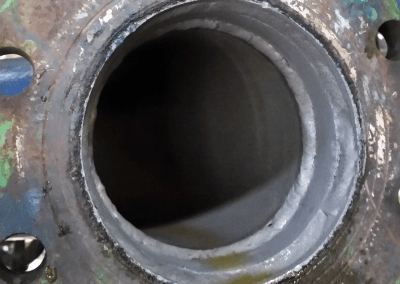What is Pickling & Passivation?
ickling and Passivation are two different treatments that often accompany one another. Pickling is a treatment with a so-called mordant for stainless steel. The mordant consists of nitric acid and hydrogen fluoride. The mordant gives a reaction which dissolves the carbides and iron particles.
After complete dissolution of the iron particles and carbides, we will rinse the stainless steel with an oxygen-rich water that is forced against the metal at a high pressure, up to 200 bar. The upper layer will be removed, after which the material is open to an interaction with oxygen. As a result, the corrosion-resistant top layer can grow back onto the material.
Normally, this process will be finished within more or less 48 hours. Whenever you treat the material with nitric acid and rinse afterwards with high pressure, you accelerate this natural process. With this mordant treatment you will have the same result in less than 30 minutes.
The last part of the process is called passivation. The material washed with mineral poor water, this will prepare the steel for usage and also protect the steel against corrosion and corrosion.
Professional Pickling & Passivation
VERM Services is your partner in advanced surface treatments and metal finishing services.
The effects of Pickling & Passivation
When metal is cultivated, it is open for damage or even depletion of the chromium or iron oxide skin. This layer will be completely restored by the treatment of hydrofluoric acid and nitric acid and by the high pressure treatment of the steel as well. The stainless steel will be back in its passive stage, which immediately takes the quality of the material to a higher level.
Different treatments for steel pickling
Pickling is a technique which can be applied in various ways. For example you can use the methods of circulating, dipping or spraying (also called fogging). Fogging is a technique used especially for large objects with a complex structure.
Companies often offer the possibility to pickle and passivate objects on location. (-or- Often we offer the possibility to pickle and passivate objects on location.)
This occurs especially for the larger objects. In any case, the quality and lifespan of materials will only improve if such techniques are used. This is a positive improvement for all kinds of sectors and applications.





